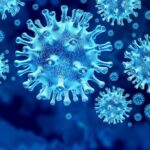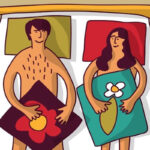ALMOST EXACTLY a year ago I wrote in Think Scotland [My intrepid attempt at visiting St Kilda] about my failed attempt to visit the archipelago featuring the Outer Hebridean island famously evacuated at the islanders’ own request in 1930 when life there became unsustainable. We were thwarted by the weather, which is notoriously changeable and unreliable for a journey of 40-50 miles (depending who you ask) into the North Atlantic.
Nothing deterred, I returned with two companions for a second attempt this August (2025). As ever, the drive up north from Edinburgh via the M9/A9 to the Dalwhinnie turnoff to head over to Spean Bridge was unremarkable but through glorious scenery.
We caught the ferry from Uig in Skye to Lochmaddy in North Uist. Arriving a couple of hours before the ferry was due to depart, we whiled the time away at the departure point in possibly the worst restaurant/pub in the whole of Scotland – dark, dingy, with a malfunctioning card payment system and surly staff and clientele. It reminded me of the dire state of the Scottish tourism sector 50 years ago, but it was the only option available. We should be able to do better than this!
In contrast, the Lochmaddy Hotel in North Uist, which had come with a bit of a health warning, was absolutely fine. Of particular note was the their version of Eggs Benedict – tattie scones, two slabs of Stornoway black pudding, two perfectly poached eggs, and Hollandaise sauce. The breakfast of champions (in these parts at least)!

Having driven from North Uist to Berneray over the connecting causeway, we caught another ferry which took us to Leverburgh on Harris, from where it was a half hour drive to the Harries Hotel in Tarbert, our base for our second attempt to get to St Kilda.
The portents were not good. The weather, always fickle, was closing in, and we had more or less accepted that our attempt would be unsuccessful again. But the Gods were with us, and the evening before we got a call that tomorrow was a ‘go’. Much excitement all round ensued.
The day broke dreich and drab, raining, gloomy, and damp. Nevertheless we departed our hotel to join our boat, a twelve-seater, in high spirits. We formed up with our fellow travellers at the pier in Leverburgh and boarded what seemed to be a rather small motor cruiser. Thankfully it had both a comfortable covered cabin and an accessible deck, so all the bases were covered.
The two and a half hour journey out to St Kilda was a bit bouncy but otherwise unremarkable, mainly because we couldn’t see much on account of the mist and rain. Eventually the main island of the St Kilda archipelago, Hirta, loomed large through the haze. We had made it!
Hirta is a remarkable place and well worth the trip on its own, never mind the other islands that form the archipelago. You can read at length elsewhere about the history of life on the island through the centuries, but suffice to say it was continuously populated for thousands of years before the final evacuation in 1930.
The village is mainly in ruins, but a few houses have been restored. Some are occupied by National Trust for Scotland staff and volunteer workers, and Cottage No 3 is now the island’s museum. There are also later buildings like the church, schoolhouse, and factor’s house dating from later in the 19th century.
A peculiarity of St Kilda are the cleitean, small, round, stone-built structures with turf roofs rather like bothies. The stones from which they are built have no mortar holding them together, allowing the wind (of which there is plenty!) to blow through the structure. They were used for storing food and other items, and there are known to be 1,260 of these buildings on Hirta alone, some of them in seemingly inaccessible places high on the cliffs.

As is well known, the islanders’ diet was largely based on seabirds and their eggs. St Kilda boasts the biggest gannet colony in Europe if not in the world, and they plus fulmars and other species were harvested by the men and the boys ascending or descending the cliffs by incredibly hazardous and skilful methods. A 1764 census described a daily consumption by each of the inhabitants of “36 wildfoul eggs and 18 wildfoul” (seabirds).
The indigenous population survived over the centuries through thick and thin despite the occasional depredations of smallpox and tetanus, always somehow bouncing back. The total inhabitants probably never numbered more than 200 at any one time; by 1930 the population had declined to just 36.
I suspect that the true watershed in the history of the islands came with the First World War, when the Royal Navy established a wireless station of Hirta with its complement of sailors. The hitherto relatively isolated St Kildans became only too aware though interaction with these servicemen that there was life beyond the horizon, and probably an easier life as well.
As an aside, the wireless station was shelled and destroyed by a German U-Boat in May 1918. The submarine lobbed over 70 shells into the military facility in doing so, but happily no casualties were incurred.
After the end of the war most of the young men left the island, and the population fell from 73 in 1920 to 37 in 1928. Four men died from influenza in 1926 and there was a succession of crop failures in the 1920s. Studies have shown that there had been contamination of the soil by lead and other pollutants, caused by the use of seabird carcasses and peat ash in the manure used on the fields.
The last straw came with the death of, Mary Gillies, a young woman who fell ill with appendicitis in January 1930 and was taken to the mainland for treatment. She died in hospital, having given birth to a daughter who also died.
All the cattle and sheep were taken off the island two days before the evacuation by the tourist boat Dunara Castle for sale on the mainland. On 29 August 1930, the ship HMS Harebell took the remaining 36 inhabitants to Morvern on the Scottish mainland, a decision they took collectively themselves.
With such a background history I had expected that St Kilda and its deserted village would be a sad place like so many other abandoned settlements across the Highlands and islands. And there is sadness and regret there, but I can’t say that visiting was a sombre experience for me.
Having been there I understand much better how the community would have worked and how, in earlier times at least, the islanders were a relatively happy lot despite their deprivations, isolated as they were from the troubles of the wider world.
What I sensed is that was a community that had had its time in history, and that time came to an end when the population fell below critical mass to keep it viable, and then it was no more. The last native St Kildan to pass away was Rachel Johnson, who died in 2016 at the age of 93, thereby closing the book on those who were born, grew up, worked, and died on the islands.
Would I recommend a visit? Most definitely yes. I found it fascinating and strangely spiritually uplifting. You have to plan carefully, though. Getting there is weather dependent and realistically only feasible in the summer months. A sizeable proportion of boat bookings to get there are cancelled. But if you’re lucky it is well worth doing.
And if the sun comes out, as it did for us, then it is truly glorious.

Established in 2006, ThinkScotland is not for profit (it makes a loss) and relies on donations to continue publishing our wide range of opinions – you can follow us on X here – like and comment on facebook here and support ThinkScotland by making a donation here.









